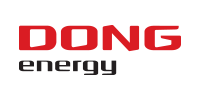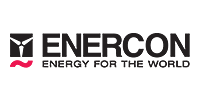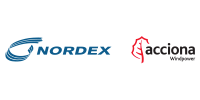09:00 - 10:30 Wind industry safety culture - from back office to front end operations

Health & safety


Room: Hall E
Well-known companies from the onshore and offshore wind power industry explain their viewpoints on how to bring safety culture from back office to front-end operation from the paper and discussions in working groups to the field.
You attended this session?
Co-chair(s):


Presenter

Co-authors:
Niklas Karlsson (1) F Mette Joervad (1)
(1) A2SEA, Fredericia, Denmark
Presenter's biography
Biographies are supplied directly by presenters at WindEurope Summit 2016 and are published here uneditedNiklas started his career as a Master Mariner, sailing to the rank of Chief Officer with companies such as Maersk Supply Service and Lauritzen Reefers, before going ashore to work in ship management/operations and HSEQ for Danish ship-owner J. Lauritzen. Niklas joined A2SEA in 2011 as Head of HSEQ and is now Director & Head of HSEQ Compliance primarily working with tender & contracting, risk management and improvement project, and function as incident investigation and auditor.
Abstract
From Paper to People
Introduction
FROM PAPER TO PEOPLE Most companies within the offshore wind industry are busy attempting to climb the traditional safety culture ladder in their quest for zero harm � a journey often lead by HSE professionals supported, in various degrees, by senior managers. While such quest is indeed praiseworthy we may have to acknowledge that our industry as a whole is fairly young and patch worked in terms of HSE standards and (combined) safety maturity. The contractual environment in which we operate often dictates a top down compliance based HSE approach where each contributor is often dealt with separately and in isolation. As such, offshore wind operators and contractors may not have the same safety (culture) perception and valuable lessons learned may not always be fed back to or actioned by relevant stakeholders.Rather than mainly pursuing the top rungs of the safety culture ladder on our own we may, as an industry, have to re-visit other important HSE improvement drives in order to agree minimum standards across the industry.
Approach
SETTING THE RIGHT STANDARDS Safety management systems need to be fit for purpose rather than solely compliancy-oriented � they have to translate to clear understandings of what people actually need to do, making the procedures operational and creating situational awareness for those doing the job.The traditional safe system of work where risk assessments and method statements translate into work permits and toolbox talks may ensure compliance with HSE regulation and some level of operational control but often does not translate into sufficient workforce involvement or (situa-tional) safety awareness. Risk assessments and method statements are often too generic and viewed as a compliance tool � a permission for the permit. Those drafting then (typically back office staff) may be too detached from front end operations and those using them in the sharp end may not find them beneficial to the task and may not fully know how to apply them � especially if operational conditions change or if expected outcomes are not achieved. Add to that that (back office) designers and managers often, knowingly or unknowingly, transfer inherent risk to the offshore environment, diluting the hierarchy of control that is otherwise relied upon within traditional HSE management.What is needed is operational awareness and control from design through planning to execution. As an industry we should focus on common HAZID/HAZOP and risk/change management stand-ards and on providing our designers, managers and workforce with uniform quality training in such disciplines.In addition we should focus on the quality of toolbox talks and workplace supervision.
Main body of abstract
SETTING THE RIGHT TEAM While the industry, as a start, should focus on implementing common standards, individual oper-ators and contractors may also benefit from re-visiting their internal procurement processes to ensure that the team of (sub-) contractors they intend to bring together on a project match each other from a safety culture perspective. As it stands, most tender and contracting processes seem, from a HSE perspective, to focus mainly on management system certificates, policy statements and (lacking) performance indica-tors. In order to add further value to the process, safety culture maturity assessments should also be made and compared across project contributors in order to ensure homogeneous (safety) performance and teamwork � while at the same time recognizing that each team member is (hopefully) an expert within his field and that, as such, �one size� may not fit all�
Conclusion
Learning objectives
How do safety standards translate from back office to front end operations?
How do we ensure safety culture maturity throughout the supply chain?





Follow EWEA on: